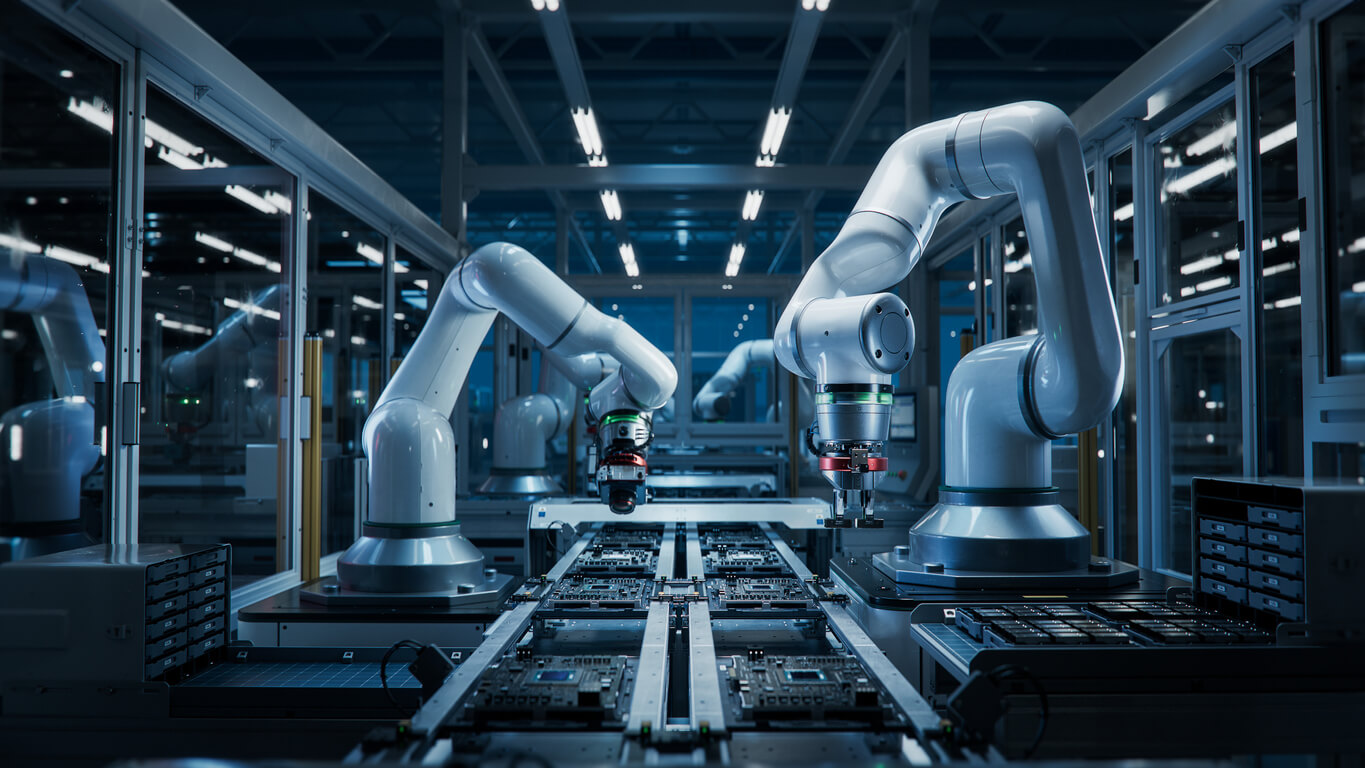To conclude 2023, let’s reflect on the innovations made in the field of robotics and automation. As industries worldwide are striving to improve the efficiency of their production lines and precision and safety, the role of industrial robots has become more and more important. Today, robots are being used in a wide variety of fields such as medicine, construction, agriculture, and even space exploration. They are not just tools, but enhanced with AI, robots are now able to make decisions and work alongside humans.
In this article we are focusing on industrial robots which improve the modern manufacturing industry and warehouses. These robots represent the future of the industry and are changing the way we work. Whether you are an industry professional, an automation enthusiast or just curious about the advancements in the robotic industry, this journey through the world of industrial robots is a must-read.
1. ABB IRB 1100 Industrial Robot
ABB is a Swedish-Swiss multinational company with headquarters in Zürich. The company was founded in 1988 and is one of the leading companies in the field of industrial robots and machine automation. In 2002 it became the world’s first company to sell 100,000 robots.
One of the most common ABB Robotics products used in manufacturing is the ABB IRB 1100 Industrial Robot which aims to increase manufacturing productivity. It is compact and powerful, providing fast cycle times and best-in-class repeatability for high quality manufacturing. It is ideal for high-speed pick-and-place operations, and it is very efficient. Compared to the previous generation, the IRB 1100 robot design is optimised with a 10% smaller footprint and over 20% weight reduction, making it perfect for electronics manufacturing factories.
2. OMRON Collaborative Robot
OMRON is a leading manufacturer of advanced automation products, including industrial robots. With over 20,000 robots installed worldwide, OMRON has a unique understanding of the needs of robot users. The brand provides a diverse line of robotics, such as six-axis, articulated robots and parallel that are suitable for different sectors, including material handling, precision machining, assembly and adhesive application.
One of the most popular OMRON robots is the collaborative robot, designed to work alongside people, helping with assembly tasks, packaging, inspection and logistics. In OMRON’s line-up there are a variety of models that guarantee the right reach and payload for different applications, with different payloads and sizes.
3. KUKA KR 3 AGILUS Industrial Robot
Kuka is a German manufacturer of industrial robots and automation systems. It was founded in 1898 and is owned by Chinese appliance manufacturer Midea Group. The company’s robots are used in production facilities around the world and one of them is the KR 4 AGILUS that is ultra-compact, precise and perfect for handling, measuring, or assembling electronic components.
4. Mitsubishi Electric Industrial Robot
Another significant participant in the industrial robots market is Mitsubishi Electric, a Japanese multinational electronics and electrical equipment manufacturing company. Mitsubishi Electric offers vertically articulated industrial robots that are appropriate for tray handling, machine tending, and assembly tasks. Additionally suitable for pick-and-place, case packaging, and assembly tasks.
Together with Realtime Robotics, Mitsubishi Electric has developed a new real-time motion planning technology that provides an easy way to program robots to perform even the most complex motion.
5. FANUC CRX Collaborative Robot
FANUC is another Japanese group of companies with a significant presence in the robotics market. It provides automation products and services to a wide range of industries.
The brand offers over 100 industrial robotic models. One of them is the FANUC CRX collaborative robots series that is safe, flexible, quick to implement and easy to program. The robot is designed to work alongside humans. Thanks to advanced sensors and vision systems, the robot can detect obstacles and work in dynamic environments which makes it suitable for both small and medium-sized enterprises.
To find out more about robots, read our Guide to Robotics and Automation here.











